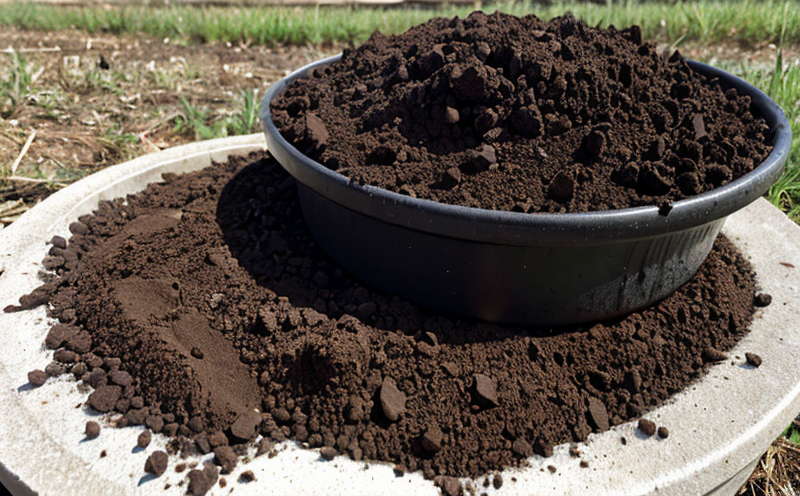EN 16199 Chloride in Landfill Leachates
The European standard EN 16199 specifies methods for determining chloride content in landfill leachate. This test is crucial for ensuring compliance with waste management regulations and assessing the environmental impact of landfills on surrounding water bodies.
Chloride levels are a key indicator of the potential for corrosive effects on infrastructure, such as metal structures and concrete barriers, which can be exposed to leachate. Elevated chloride concentrations may also indicate improper landfill operations or insufficient waste treatment processes. The standard provides detailed procedures for sampling, preparation, and analysis using potentiometric titration or ion-selective electrodes.
Compliance with EN 16199 is mandatory for landfills that receive hazardous waste, industrial waste, and municipal solid waste. Regular monitoring of leachate chloride levels helps landfill operators identify potential issues early on, allowing for timely corrective measures to be implemented. This not only minimizes the risk of environmental pollution but also ensures compliance with national and international standards.
Our laboratory adheres strictly to EN 16199 guidelines, ensuring accurate and reliable chloride concentration measurements in leachate samples. Our experienced team performs rigorous quality checks at every stage of the testing process, from sample collection to final report generation. By leveraging advanced analytical instrumentation, we offer precise results that meet or exceed regulatory requirements.
Our services extend beyond mere compliance; they provide actionable insights into landfill performance and potential risks. This information is invaluable for decision-makers in waste management who need to optimize operational practices and maintain sustainable environmental stewardship. Whether you're a landfill operator, a regulatory body, or an R&D engineer, our EN 16199 chloride testing service offers comprehensive support tailored to your specific needs.
In addition to standard methods, we can also customize our approach based on client-specific requirements. For instance, if you have unique waste compositions that require special handling or analytical techniques, we will work closely with you to develop a bespoke solution. Our commitment to excellence ensures that every project receives the attention and resources it deserves.
By choosing our EN 16199 chloride testing service, you gain access to a wealth of expertise and state-of-the-art facilities designed specifically for this type of analysis. We pride ourselves on delivering accurate results promptly while adhering strictly to all relevant standards and guidelines. Your satisfaction is our top priority.
Our team remains dedicated to staying abreast of the latest developments in waste management science, ensuring that our methods remain up-to-date and effective. This continuous improvement process allows us to provide cutting-edge solutions that address current challenges in environmental protection and sustainable practices.
Applied Standards
The European standard EN 16199 is widely recognized for its comprehensive approach to measuring chloride content in landfill leachates. It outlines precise methodologies that ensure consistent, accurate results across different laboratories and jurisdictions.
The standard covers various aspects of the testing process, including:
- Sampling procedures
- Preparation techniques
- Analytical methods using potentiometric titration and ion-selective electrodes
- Safety protocols for handling hazardous materials
The use of these standardized methods guarantees that the chloride concentrations reported are reliable, repeatable, and comparable. Compliance with EN 16199 is mandatory for landfills regulated under European Union directives related to waste management.
Our laboratory strictly adheres to all provisions outlined in this standard, ensuring that our findings reflect real-world conditions accurately. This adherence also allows us to provide robust evidence supporting any claims or submissions made regarding landfill performance and environmental impact assessments.
Benefits
Conducting EN 16199 chloride testing offers numerous benefits for stakeholders involved in waste management. Here are some key advantages:
- Regulatory Compliance: Ensures that landfills meet stringent EU regulations regarding hazardous and industrial waste.
- Risk Management: Identifies potential risks associated with high chloride levels, allowing for proactive mitigation strategies.
- Eco-Friendly Practices: Helps maintain the integrity of surrounding ecosystems by preventing contamination from leachate runoff.
- Operational Efficiency: Provides valuable data that can inform operational adjustments and improve overall landfill management practices.
- Data Integrity: Offers consistent, high-quality data essential for accurate decision-making at various organizational levels.
- Transparency: Facilitates clear communication between stakeholders about the environmental impact of waste disposal operations.
Competitive Advantage and Market Impact
In today’s competitive market, demonstrating compliance with international standards like EN 16199 can significantly enhance a company's reputation. Landfill operators who consistently meet these requirements are viewed favorably by regulators, investors, and the public alike.
By providing accurate chloride concentration data through our EN 16199 testing service, we help clients gain competitive advantages in several ways:
- Enhanced Reputation: Establishes trust and credibility among all stakeholders.
- Informed Decision-Making: Enables better strategic planning based on reliable data.
- Avoidance of Penalties: Reduces the risk of non-compliance fines or other penalties imposed by regulatory bodies.
- Promotion of Sustainability: Contributes to the overall goal of sustainable waste management practices globally.
- Cost Efficiency: Identifies inefficiencies early, leading to cost savings in long-term operations.
The insights gained from our EN 16199 chloride testing service can have far-reaching impacts beyond just individual projects. They contribute to broader initiatives aimed at improving environmental conservation efforts worldwide.





